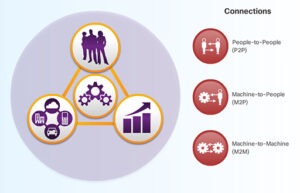The Evolution of HAC Aldine: A Journey Through Accessible Writing
Introduction
In the realm of accessible writing, one name stands out prominently: HAC Aldine. This innovative approach to crafting written content has revolutionized communication for diverse audiences. From its humble beginnings to its widespread adoption, the journey of HAC Aldine showcases the power of human-centered design and the importance of language accessibility. This article aims to delve into the intricacies of HAC Aldine, exploring its origins, principles, and impact on modern communication.
Origins of HAC Aldine
Inception and Inspiration
The genesis of HAC Aldine traces back to a quest for inclusivity in written communication. Conceived by a team of linguists and accessibility advocates, HAC Aldine emerged from a recognition of the barriers faced by individuals with diverse linguistic abilities, cognitive differences, and reading challenges. Drawing inspiration from plain language principles and universal design concepts, the creators set out to develop a writing style that would prioritize clarity, simplicity, and comprehension for all readers. You can also read How To Achieve Stunning Hair Colors With Pravana
Defining HAC Aldine
HAC Aldine is more than just a writing style; it’s a philosophy grounded in empathy and understanding. At its core, HAC Aldine seeks to dismantle communication barriers by employing strategies that make written content universally accessible. Unlike traditional writing styles, which often prioritize complexity and verbosity, HAC Aldine champions conciseness, coherence, and reader-centricity. Its guiding principles include:
- Simplicity: Simplifying language without sacrificing meaning is central to HAC Aldine. Complex concepts are distilled into digestible chunks, ensuring that readers of all backgrounds can grasp the intended message.
- Clarity: Ambiguity has no place in HAC Aldine. Clear and unambiguous language is paramount, facilitating comprehension and minimizing the risk of misinterpretation.
- Inclusivity: HAC Aldine embraces diversity by accommodating various reading levels, linguistic backgrounds, and cognitive abilities. It strives to be inclusive rather than exclusive, welcoming readers from all walks of life.
- Human-Centered Design: At its heart, HAC Aldine is about putting people first. Every word, sentence, and paragraph is crafted with the reader in mind, prioritizing their needs and preferences above all else.
The Principles of HAC Aldine
Accessibility in Action
HAC Aldine puts its principles into action through a series of practical strategies aimed at enhancing readability and comprehension. These strategies include:
- Plain Language Techniques: Plain language lies at the core of HAC Aldine. Complex terms are replaced with simpler alternatives, jargon is minimized, and sentences are structured for maximum clarity. By stripping away unnecessary complexity, HAC Aldine ensures that readers can focus on understanding the message rather than deciphering convoluted language.
- Visual Elements: In addition to plain language, HAC Aldine leverages visual elements to enhance comprehension. Bulleted lists, tables, and diagrams are used strategically to organize information and highlight key points. Visual cues complement written text, providing multiple entry points for understanding.
- Logical Flow: A logical flow is essential for coherence in written communication. HAC Aldine prioritizes logical sequencing, organizing information in a way that follows natural thought patterns. This ensures that readers can navigate the text effortlessly, without getting lost or confused.
- Interactive Components: Interactive components, such as hyperlinks and tooltips, are integrated into HAC Aldine content to provide additional context or clarification. These interactive elements empower readers to engage with the text actively, seeking out further information as needed.
Impact and Future Directions
Transforming Communication
The impact of HAC Aldine on communication cannot be overstated. By breaking down barriers to understanding, HAC Aldine has opened doors for individuals who previously struggled to access written content. From educational materials and government documents to online articles and consumer guides, HAC Aldine has permeated various spheres of society, democratizing access to information in the process.
Challenges and Opportunities
Despite its widespread adoption, HAC Aldine faces challenges on its journey towards universal acceptance. Resistance from entrenched writing conventions, limited awareness among content creators, and the need for ongoing refinement are among the obstacles that must be overcome. However, with continued advocacy, education, and collaboration, the future of HAC Aldine looks promising.
Conclusion
In conclusion, HAC Aldine represents a paradigm shift in written communication, prioritizing accessibility, inclusivity, and empathy above all else. Its evolution from a simple idea to a powerful tool for social change is a testament to the transformative potential of human-centered design. As we look to the future, let us embrace the principles of HAC Aldine and strive to create a world where everyone can access information easily, regardless of linguistic ability or cognitive difference.













Post Comment